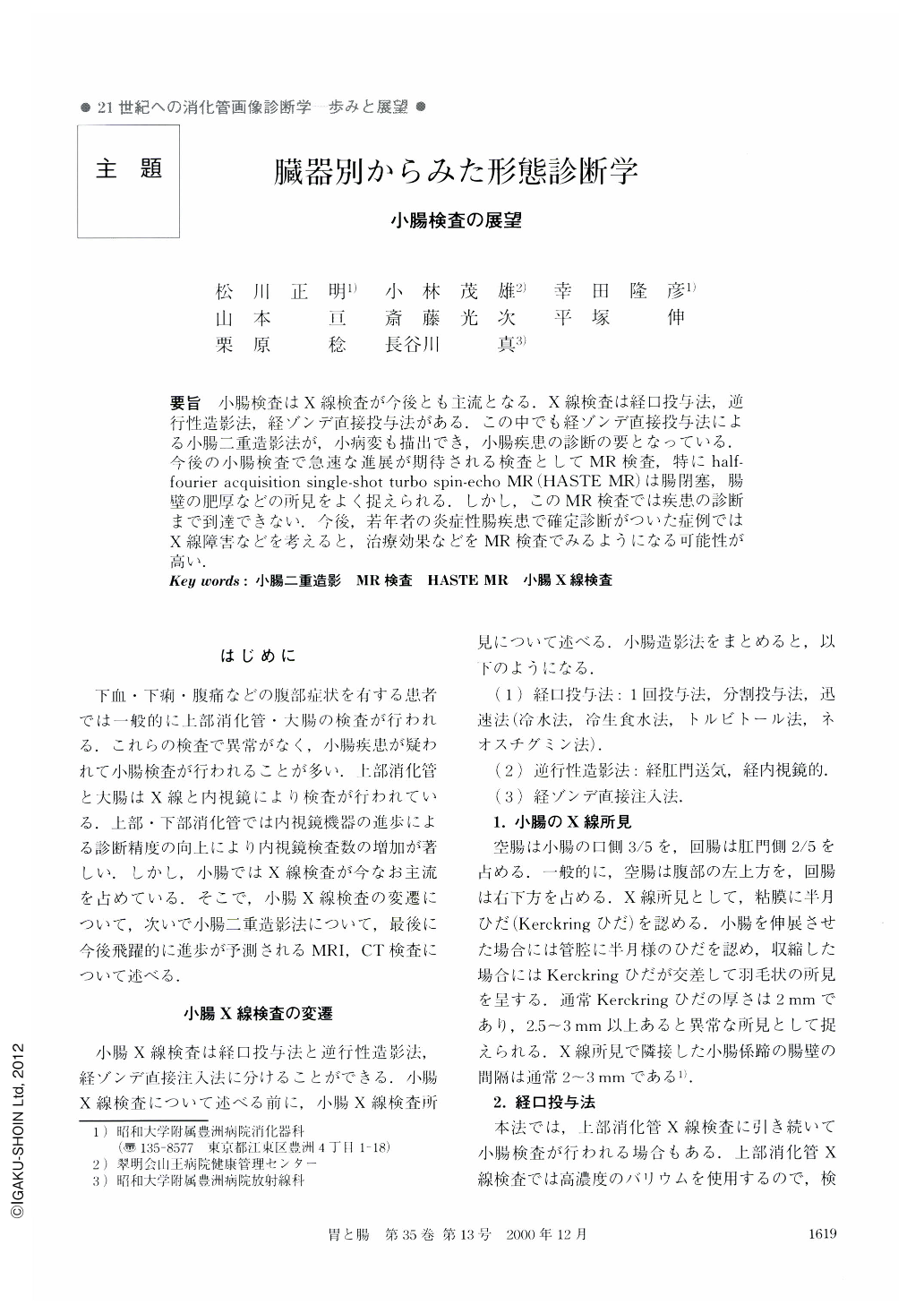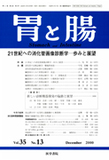Japanese
English
- 有料閲覧
- Abstract 文献概要
- 1ページ目 Look Inside
要旨 小腸検査はX線検査が今後とも主流となる.X線検査は経口投与法,逆行性造影法,経ゾンデ直接投与法がある.この中でも経ゾンデ直接投与法による小腸二重造影法が,小病変も描出でき,小腸疾患の診断の要となっている.今後の小腸検査で急速な進展が期待される検査としてMR検査,特にhalffourier acquisition single-shot turbo spin-echo MR(HASTE MR)は腸閉塞,腸壁の肥厚などの所見をよく捉えられる.しかし,このMR検査では疾患の診断まで到達できない.今後,若年者の炎症性腸疾患で確定診断がついた症例ではX線障害などを考えると,治療効果などをMR検査でみるようになる可能性が高い.
Small mucosal lesions of the small intestine can be clearly demonstrated by the double contrast method except in the terminal ileum. But mucosal lesions in the terminal ileum are clearly demonstrated by the compressed method or the retrograde air injection technique. Fast MR imaging techniques, including half-Fourier acquisition single-shot turbo spin-echo (HASTE), produce high-quality images of the abdomen in seconds. These MR imagings clearly detect swelling of the intestinal wall or intestinal obstruction. However, in these MR imagings, small mucosal lesions can not be demonstrated. Therefore, in differential diagnosis of small intestinal diseases we should detect mucosal lesions by the double contrast method. In a patient with superior mesenteric and portal vein thrombosis, the involved segment had an inner wall of low signal intensity and a high-signal-intensity outer wall. In a patient with arterial thrombosis, the signal intensity of the thickened intestinal wall was less than that of fat but slightly greater than that of muscle.

Copyright © 2000, Igaku-Shoin Ltd. All rights reserved.


